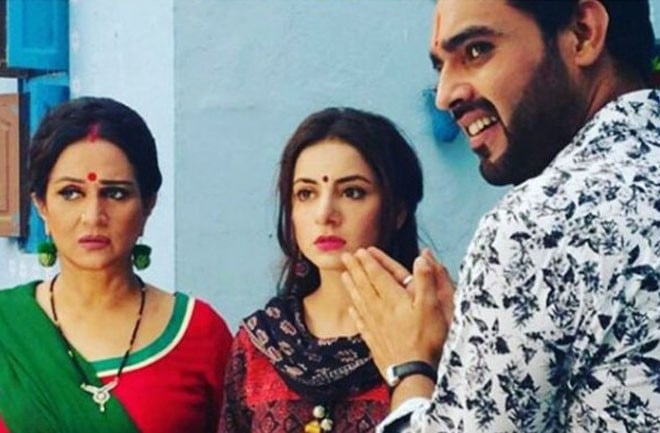
Just like Bollywood movies, Pakistani dramas tend to address minorities through the lense of an epic romance between star-crossed lovers

Any Pakistani travelling abroad knows what it feels like to be a minority. No longer an individual, the traveller suddenly becomes the standard bearer of both their culture and nation. For Muslims, it’s a triple threat, because the war on terror has meant they must also act as a representative of the 1.6 billion others. One wrong move, one bad interaction and all the negative stereotypes in the international media are reinforced instead of being counteracted.
While most Pakistanis have the privilege of returning home and blending back in the majority, Pakistani minorities don’t. Muslims and Pakistanis are rightly disturbed by portrayals of them in American tv shows like Homeland and Hollywood movies, yet how many of us are aware of how our own media presents its own minorities?
As in every society, the depiction of minorities in Pakistan is such a difficult issue that writers and production houses generally shy away from it. Just like Bollywood movies, Pakistani dramas tend to address minorities through the lense of an epic romance between star-crossed lovers. Forced apart by the petty restrictions of society and religion "do dil tootey, do dil haray" is the usual clichéd refrain, ending with the typical subliminal appeal of: "Why can’t we all just get along?" This narrow focus is amply illustrated in drama serials like Ruswa, and Meri Adhuri Mohabbat, Khuda Aur Mohabbat which all end in the female character converting. While it is true that conversions for marriage do happen, this emphasis leaves little room to inform or learn about people of different faiths and cultures.
There are some interesting exceptions, though, where minorities are treated as real individuals. The drama Bilqees Kaur did not concentrate on a love story. But gave a great example of the dueling identities facing converts as they try to reconcile the past and present. The eponymous Bilqees Kaur may pray fajr and live as a Muslim, but she also visits the Gurudwara to pray for her parents. The writer Faiza Iftikhar also shows her character recognising the great pain her conversion caused her parents and family and accepting that it is only karma if her children treat her similarly rather than celebrating some theological victory.
In the recent past, dramas like Akbari Asghari, Kuch Pyar Ka Pagalpan, Mata-e-Jaan Hai Tu and the more recent Bin Roye have given us authentic Hindu and Sikh characters that are not just defined by religion. The snobbish Kim of Akbari Asghari, Hania’s Indian American friend in Mata-e-Jaan Hai Tu, the Sikh "uncle" Shamraiz has in Kuch Pyar Ka Pagalpan, Safeer’s Hindu wife in Bin Roye are normal people portrayed with nuance and respect. On the flipside, serials like Mastana Mahi, Parsa, Aahista Aahista and now Saya-e-Dewar Bhi Nahi are all stern warnings of the consequences of mixed marriages to Christians, replete with stubborn, vindictive spouses who don’t understand the meaning of the word compromise. Women, in particular, are shown to suffer for marrying someone outside of their religion. In a bid to provide a level of equality, Aahista Aahista showed the man suffering for marrying what was in the beginning a sweet, caring Indian woman who suddenly becomes an angry psychopath.
Dastaan is a perfect illustration of the thin line makers have to walk when dealing with such sensitive issues. Just as many Pakistanis saw a strong bias in Bollywood movies that have touched upon Muslims and Partition, like Gadar, Pinjar and Hey Ram, some Indians perceived Dastaan’s characterisations as one-sided. So despite being considered one of the best serials to have come out of Pakistan, substantial editing was carried out to make it "palatable" before Zee Zindagi could release it in India.
Just like a traveller to foreign lands, the minority face in a drama carries the burden of representation; any negative role often has to be offset with another positive one, to avoid what might look like demonisation of one group. However, the dilemmas for makers don’t end there as even that notion of ‘balance’ can end up looking like tokenism: as the ‘one good guy’ seems like the exception to the majority of ‘bad ones’.
On a brighter note, production houses are making some progress. One good example is the serial Seeta Bagri on Tv One, which tells the story of a Hindu Pakistani girl living with her family in Karachi. Despite the forced Hindi dialogues and sanitised cheerfulness of the characters, there is a sincere attempt to show minorities as an integral part of mainstream society rather than an issue to be resolved.
Just a glance through the average viewing schedule would make anyone doubt the existence of Shia, Ismaili and Ahmadi minorities in Pakistan because of their complete absence on screen except as part of news bulletins. Just as the presence of people of colour on western tv screens has helped to increase tolerance and coexistence, more stories about these communities might also help open hearts and minds. The advent of Pakistani dramas on platforms like Netflix and iflix has increased their international presence and may allow them the confidence to make such socially conscious stories. Dramas that touch on the real issues faced by minorities can help create understanding and bridges between communities where policies cannot.